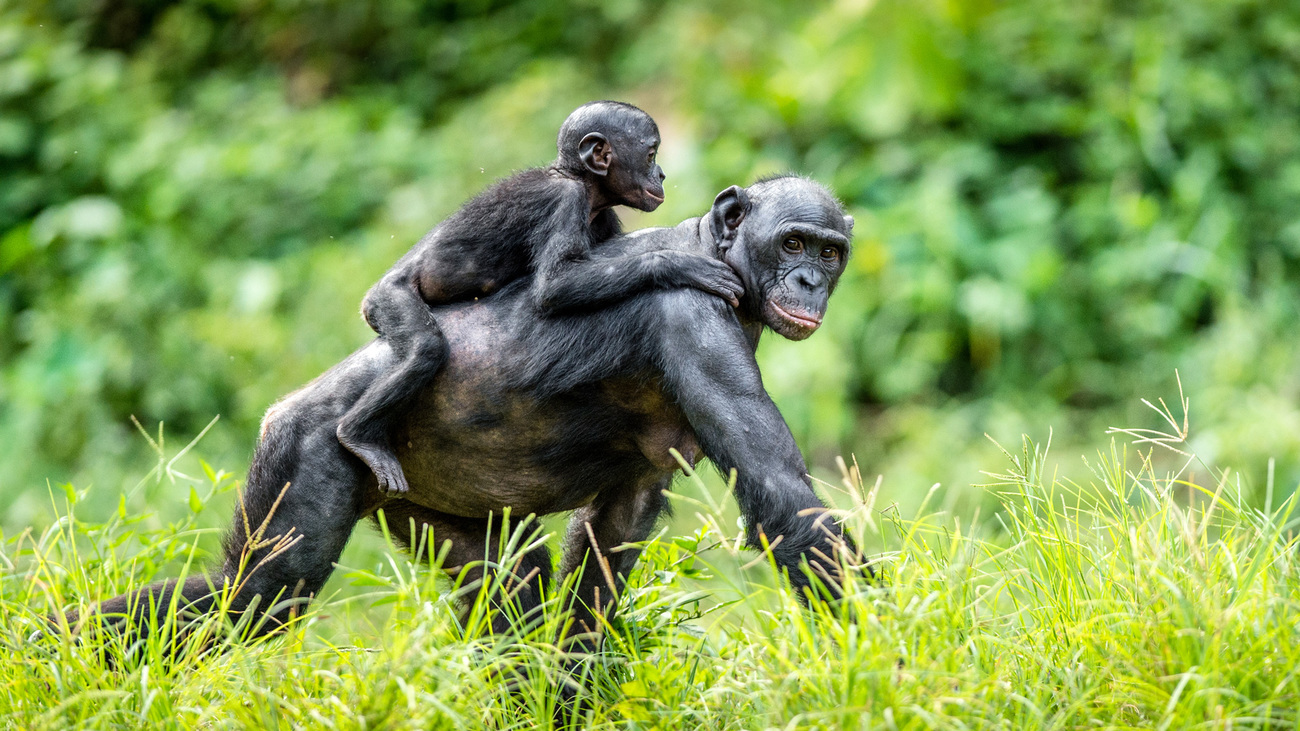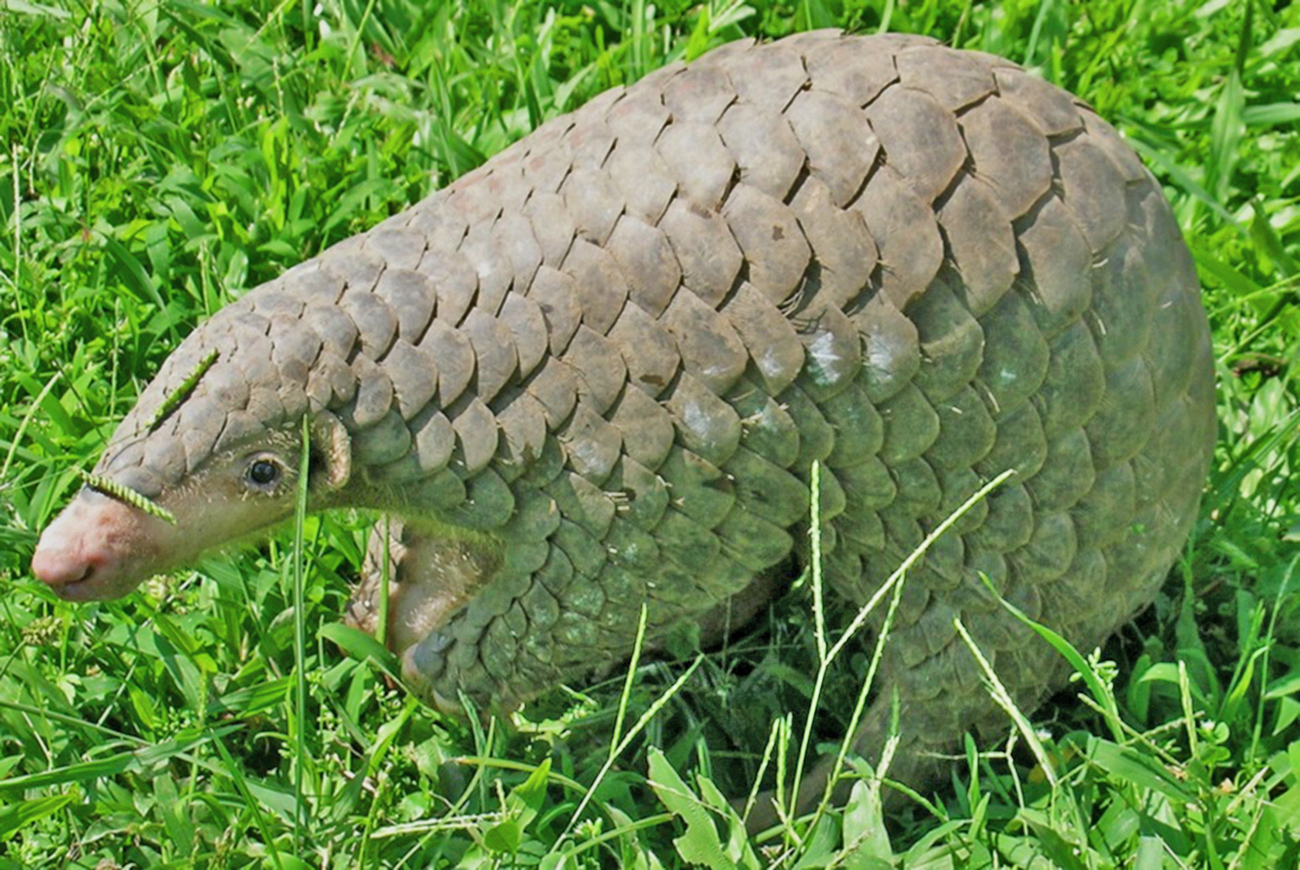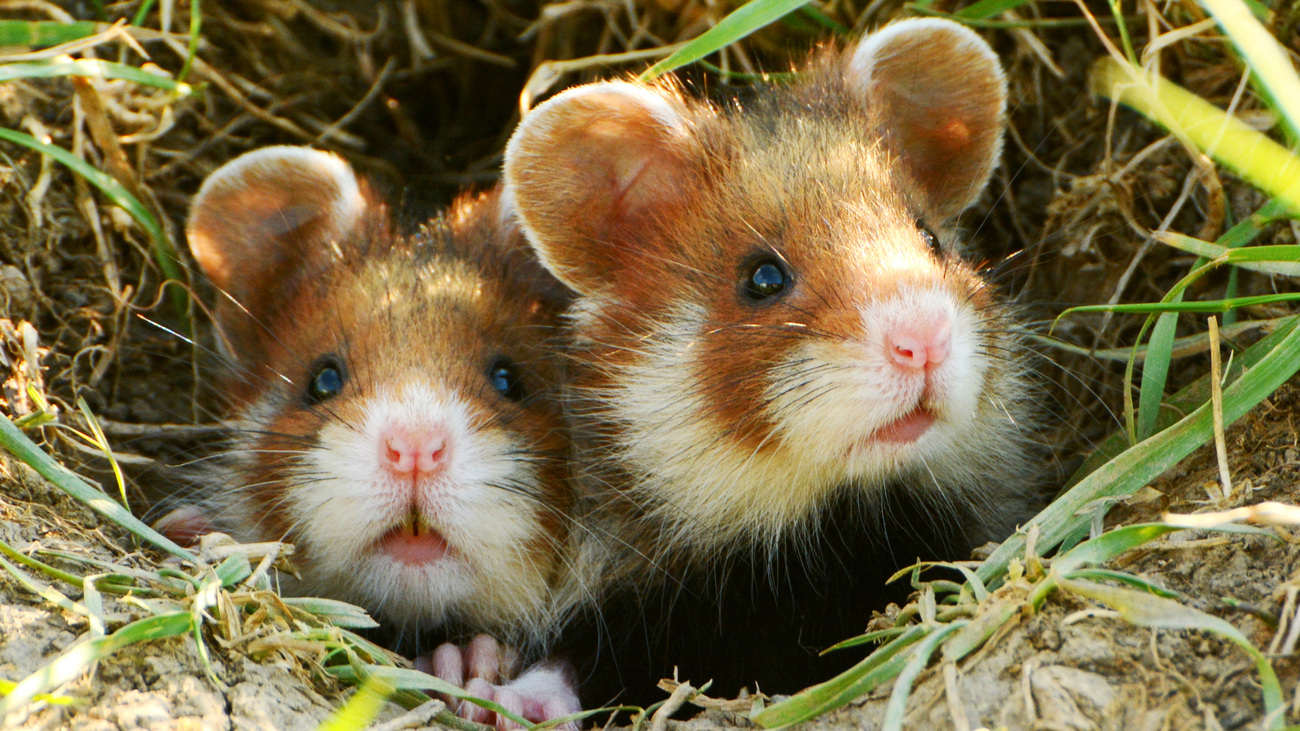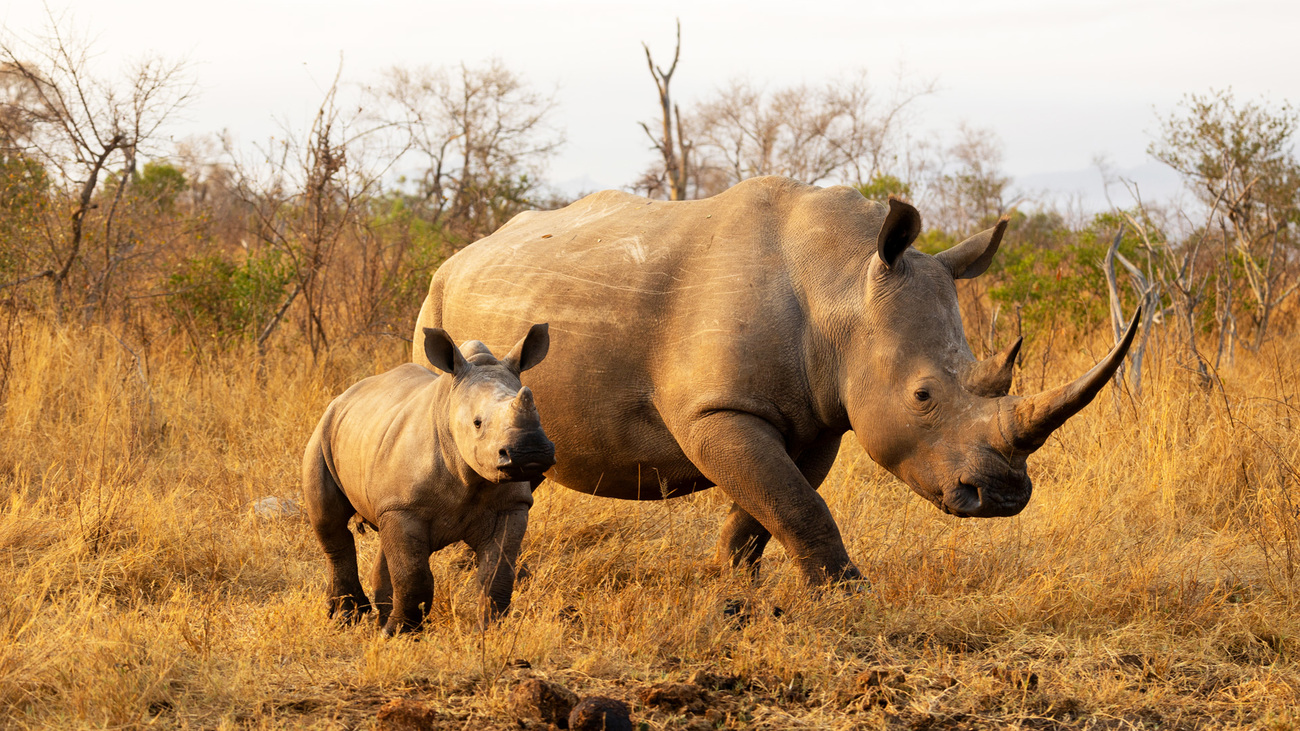Endangered species: terms & definitions
Endangered species: terms & definitions
How serious is the situation for critically endangered animals? Do species automatically receive this status if their population drops below a certain number? Understanding the details behind conservation statuses and the common threats that animals face is an important part of protecting them from extinction. At IFAW, we commonly use the following terms when we discuss our wildlife conservation work, so we want to help clarify and simplify their meanings.

Conservation status
An animal’s conservation status is a label that indicates a species’ risk of extinction. These include ‘least concern’, ‘near threatened’, ‘vulnerable’, ‘endangered’, ‘critically endangered’, ‘extinct in the wild’, and ‘extinct’.
There are many different factors to consider when assigning a species’ conservation status, including sudden population reduction, fragmentation or decline in geographic range, gradual population decline, and very small or restricted population size. It’s important to note the scale of conversation statuses—they can be regional, state, national, or global. The same animal could have a least concern status at a global level but be endangered in specific regions. Global conservation statuses, and some regional statuses, are assigned by the International Union for Conservation of Nature (IUCN).
IUCN Red List
IUCN stands for the International Union for Conservation of Nature. It was founded in 1964, and its Red List is now considered the standard and most comprehensive resource for conservation statuses in the world. The Red List covers not just animals, but also fungus, plant, and microorganism species.
The Red List aims to provide well-researched information that can inform policy changes and conservation decisions. Each entry includes information on the species’ range, population size, population trend, habitat, ecology, uses, role in trade, threats, and conservation actions. So far, the number of species on the Red List is around 150,100, but their goal is to assess at least 160,000 species.

Extinct
Species are labeled as extinct (EX) when they can no longer be found in the wild and all individuals in captivity have also died. Some species can be difficult to find in the wild, so it’s necessary to conduct extensive surveys to continue to search for them. However, when no individuals are found for a significant period of time, the species is presumed extinct.
Some examples of extinct animals include Guam flying foxes, Japanese sea lions, and Floreana giant tortoises. In October 2023, 21 animals were declared extinct in the US and removed from the Endangered Species Act.
Extinct in the wild
Animals are considered extinct in the wild (EW) when they can only be found in captivity, as livestock, or in naturalised populations outside of their historical range. It typically takes a long time to qualify for this status because researchers need to conduct exhaustive surveys in the right places at the right times to ensure there are no remaining wild populations.
Some examples of animals that are extinct in the wild include Hawaiian crows, Guam Kingfishers, and Wyoming toads.
Critically endangered
To qualify as critically endangered (CR) on the IUCN Red List, a species must meet at least one of the following criteria:
- A 50% or higher chance of becoming extinct in the next ten years or three generations
- 250 or fewer mature individuals in total
- 50 or fewer mature individuals per subpopulation
- A continuing population decline of 25% or more in three years or one generation
- An extent of occurrence (EOO) of less than 100 square kilometers (62 square miles)
- An area of occupancy (AOO) of less than 10 square kilometers (6 square miles)
- A population reduction of 70% or more over the past ten years or three generations
Any species classed as critically endangered faces an extremely high risk of extinction in the wild. Some well-known examples include black rhinos, Chinese pangolins, African forest elephants, and common hamsters.
Endangered
Endangered (EN) species on the IUCN Red List meet one or more of the following criteria:
- A 20% or higher chance of becoming extinct in the next 20 years or five generations
- 2,500 or fewer mature individuals in total
- 250 or fewer mature individuals per subpopulation
- A continuing population decline of 20% or more in five years or two generations
- An extent of occurrence (EOO) of less than 5,000 square kilometers (3,100 square miles)
- An area of occupancy (AOO) of less than 500 square kilometers (310 square miles)
- A population reduction of 70% or more over the past ten years or three generations
These species face a very high risk of becoming extinct in the wild and require urgent action for their survival. Some well-known examples of endangered animals include chimpanzees, Asian elephants, bonobos, tigers, and red pandas.
As of 2024, there are over 17,300 species listed as endangered on the IUCN Red List, over 6,300 of which are animals.

Vulnerable
A species is considered vulnerable (VU) on the IUCN Red List when the best evidence available shows that it meets any of the criteria listed in the above section. Species only need to meet one criterion to qualify as vulnerable. An animal with this status faces a high risk of extinction in the wild and should be prioritised in terms of conservation efforts.
Some well-known animals in the vulnerable category include cheetahs, koalas, polar bears, giant anteaters, leopards, and lions.
As of 2024, there are nearly 17,000 species listed as vulnerable, including over 7,000 animal species.
Near threatened
A near threatened (NT) status on the IUCN Red List applies to species that have been evaluated against the Red List criteria and don’t qualify for critically endangered, endangered, or vulnerable status. However, they are close to qualifying for a threatened category or are likely to qualify in the near future.
This means the species is close to meeting one or more of the following criteria:
- A 10% or higher chance of becoming extinct in the next 100 years
- 10,000 or fewer mature individuals in total
- 1,000 or fewer mature individuals per subpopulation
- A continuing population decline of 10% or more in ten years
- An extent of occurrence (EOO) of less than 20,000 square kilometers (12,400 square miles)
- An area of occupancy (AOO) of less than 2,000 square kilometers (1,200 square miles)
- A population reduction of 50% or more over the past ten years or three generations
A few well-known examples of near threatened species include platypuses, jaguars, European bison, and white rhinos.
As of 2024, there are over 9,100 species listed as near threatened, including over 5,000 animals.
Least concern
A least concern (LC) status applies to species that have been evaluated against the Red List criteria and don’t qualify for critically endangered, endangered, vulnerable, or near threatened status.
A least concern species has less than a 10% chance of becoming extinct in the next 100 years, significantly more than 10,000 mature individuals in total, much more than 1,000 mature individuals per subpopulation, and a continuing population decline of much less than 10% in ten years. They also have an extent of occurrence (EOO) of much more than 20,000 square kilometers and an area of occupancy (AOO) of much more than 2,000 square kilometers. Lastly, they also have a population reduction of much less than 50% over the past ten years or three generations.
Some well-known examples of animals in the least concern category include brown bears, common dolphins, red foxes, and moose. Even though they are listed as least concern, many of these animals still face threats to their survival in the wild.
As of 2024, there are nearly 81,600 species listed as least concern on the IUCN Red List. This includes nearly 50,800 animal species.
Data deficient
A species is listed as Data Deficient when there is not enough scientific data to make an assessment of its risk of extinction. Sometimes these species are well-studied and well-known, but there hasn’t been enough research done on their abundance and distribution throughout their range.
Mass extinction
Though individual species go extinct all the time, a mass extinction is an event in which many species die out faster than they are being replaced. The background extinction rate—the typical rate at which species go extinct—is thought to be between 0.1 and 1 species per 10,000, per 100 years. A mass extinction is defined as a period of less than 2.8 million years in which about 75% of the world’s species are lost. We know of five mass extinction events that have occurred within the last 500 million years—and today, scientists believe that we are in the midst of a sixth.
Endangered Species Act
The US Endangered Species Act of 1973 expanded on two prior bills in the 1960s—the Endangered Species Preservation Act and the Endangered Species Conservation Act. The Act aims to protect endangered species by making it illegal for federal agencies to carry out actions that jeopardise the survival of any listed species or damage their critical habitats. Removing animals from their habitats and engaging in any kind of import, export, or foreign commerce is also prohibited.
As of 2023, the Endangered Species Act has been going strong for 50 years and has succeeded in protecting 99% of its listed species from extinction. One notable success is the national symbol of the US—the bald eagle. In 1963, there were thought to be fewer than 500 breeding pairs of bald eagles left in the country, but thanks to the protection granted by the Endangered Species Act and decades of conservation efforts, there are now an estimated 316,700 bald eagles.
IFAW is dedicated to advocating for policy in the US that continues to protect endangered species.
Convention on International Trade in Endangered Species of Wild Flora and Fauna (CITES)
CITES is an agreement between over 180 countries to regulate international trade in wild animals and plants. It was established in 1975, and its goal is to protect species from extinction. While governments join the agreement voluntarily, once they are members, they are legally required to create national laws to control the trade in wildlife, ensuring it is legal, sustainable, and traceable.
An outright ban on wildlife trade is not always the solution, as it sometimes sends illicit activities underground, so bans should be accompanied by increased enforcement and measures to reduce demand for wildlife products. By properly regulating wildlife trade, we can have greater visibility and monitoring of the legal and illegal activities of global trade routes.
There are three appendices to CITES that guide trade regulation based on how threatened a species is:
- Appendix 1 is for species that are the closest to extinction and need the highest level of protection. Appendix 1 species make up just 3% of the 38,000 covered by CITES and can’t be legally traded for commercial purposes.
- Appendix 2 is for species that are likely to be threatened with extinction without trade regulation. It also includes ‘look-alike’ species to prevent protected wildlife being traded illegally as a look-alike species. While it is legal to trade Appendix 2 species; trade must be limited to sustainable levels and all trade is monitored and controlled with permits.
- Appendix 3 includes species that are protected by at least one country and require international cooperation to protect them.
Climate change
Climate change refers to long-term shifts in temperature and weather patterns (rather than short-term or day-to-day changes). These changes are largely driven by the burning of fossil fuels like coal, oil, and gas. Climate change presents a danger to wildlife because it can upset the balance of ecosystems. For example, a temperature change could cause a certain type of plant to stop growing, which lowers the population of a prey species that eats it, which lowers food availability for predator species. This is a very simple example. In reality, ecosystems are extremely complex, and a temperature change could have a domino effect that harms hundreds of co-existing species.
Fortunately, there are ways we can work to combat climate change. IFAW is supporting nature-based solutions, through which nature itself helps us heal the planet.
Overfishing
Overfishing is exactly what it sounds like—catching a species of fish or other marine animal in excessive and unsustainable quantities. This is dangerous because if too many fish are caught, there aren’t enough fish left over to repopulate, and they risk extinction.
Overfishing is also connected with poor efficiency and money-saving tactics where fishers haul in large amounts of unwanted fish or other animals (known as bycatch) which were not the target and are simply discarded.
Overfishing isn’t just dangerous for the world’s fisheries and marine species—it’s dangerous for humans too. Around three billion people worldwide depend on seafood as a protein source, and if all fisheries are depleted beyond recovery, we will face a food crisis.
Illegal wildlife trade
Illegal wildlife trade refers to the illegal capturing and/or killing of wildlife for commercial purposes. Why the trade is illegal varies depending on the situation: sometimes the species itself is protected by law, sometimes it’s illegal to hunt in certain areas of land, and sometimes it’s the way the wildlife is sold or who it’s sold to that makes the trade illegal.
The illegal wildlife trade is very destructive. It not only harms the animals that are taken but also their offspring, their ecosystems, and even the park rangers trying to protect them. Illegal trade is almost impossible to stop as long as there’s demand for the product. That’s why it’s so important to spread information and raise awareness about the damage it causes.
IFAW is dedicated to combatting illegal wildlife trade. We have projects in East Africa, southern Africa, Central Africa, China, Australia, Europe, Indonesia, Southeast Asia, and Latin America and the Caribbean fighting against the illegal trafficking of animals and their parts, and we also work to prevent wildlife cybercrime, which occurs globally.
Read about how a daring team stops illegal wildlife trade in Indonesia or how we’re supporting forensics training of wildlife rangers in Kenya.


Human development
Human development refers to human expansion in the form of agricultural practices, urbanisation, and industrialisation. As the human population grows, we need more natural resources to sustain ourselves, including more land to farm and keep livestock, more fuel to burn, and more metal and wood to build with. These developments greatly contribute to pollution, climate change, and the destruction of natural habitats.
Human development often results in less space available to wildlife, lower-quality habitats, and dangerous pollutants, all of which make it impossible for species to thrive at the same levels as they did before human disruption.
Habitat loss
Habitat loss refers to a reduction in the amount of space available to a species in which they can survive and reproduce. It can occur because of human expansion and development or because humans changed the landscape through activities like deforestation and agriculture. These activities either make it impossible for a species to survive or make it easier for non-native species to thrive, resulting in increased competition. Ecosystems are complex, so there are a lot of different ways in which they can be disturbed.
When a species experiences habitat loss, its population size is directly affected. With no choice but to adapt to a smaller habitat, there’s less food to share and more competition amongst territorial species. Reproductive habitats are disturbed, and infant survival rates decrease, permanently reducing population size until it reflects the available space and resources.
IFAW’s Room to Roam initiative works to connect habitats so elephants and other wildlife across Africa have the space they need to find resources and reproduce.
Related content
Every problem has a solution, every solution needs support.
The problems we face are urgent, complicated and resistant to change. Real solutions demand creativity, hard work and involvement from people like you.